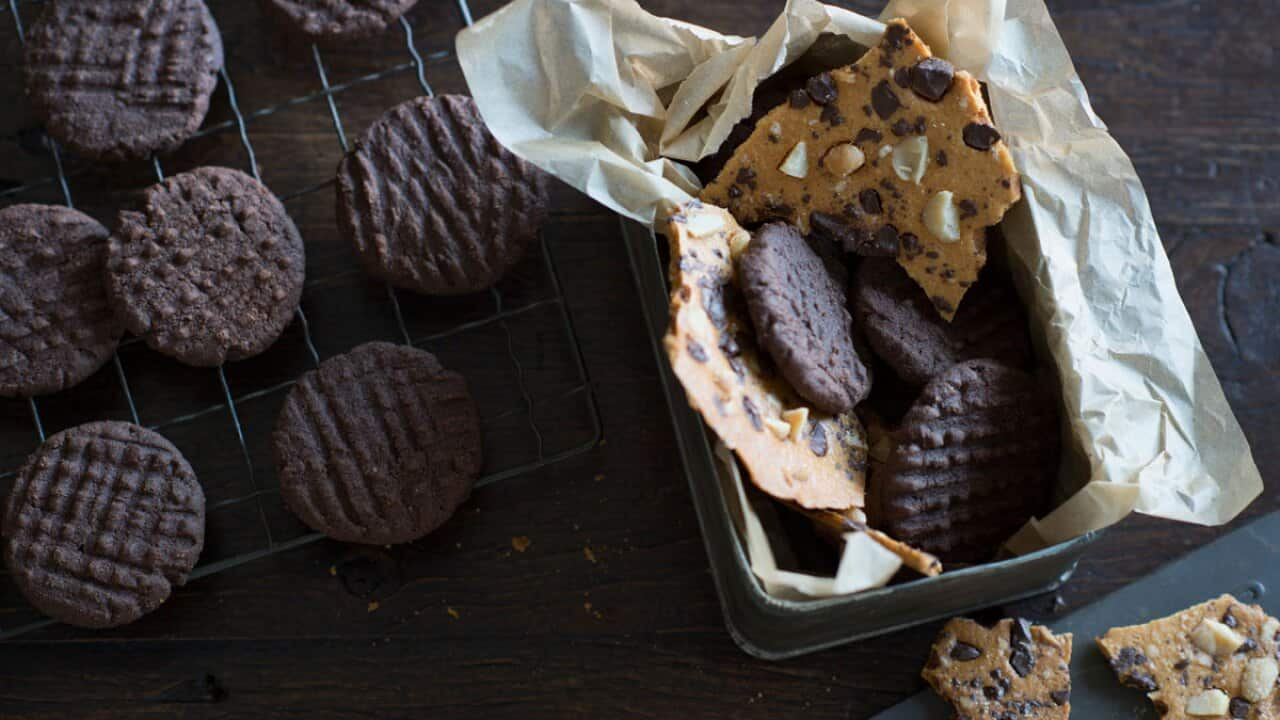I didn’t know how lucky I was at the time, but my true introduction to traditional Lebanese food happened in the early days of dating the man who would become my husband – Paul. Made with love by his grandmother and steeped in family history, dishes like kibbeh nayyeh – finely minced lean raw lamb combined with bulgur (cracked wheat) and eaten like steak tartare – were made especially when we visited. I’ll admit this wasn’t one of my favourites, and I ate it just so I wouldn’t offend, but the food that was brought from the oven, that was entirely another extremely delicious story!
Paul’s paternal grandparents moved to Australia from Lebanon in the 1950s, and with them came the food traditions of their homeland. Paul’s mum, Hazel, saw how much her children loved their grandmother’s food and made a point of learning as much as she could from her mother-in-law. Paul remembers their family Sunday lunches fondly – the equivalent of the Sunday roast was a generous and flavoursome spread of Lebanese food. His favourites were kibbeh bil sayneyeh (a baked version of kibbeh), vine leaves (grape leaves with a rice stuffing), stuffed marrows (zucchini with a rice and/or minced lamb stuffing) in a tomato sauce, vermicelli rice (broken vermicelli noodles and rice cooked with cinnamon, pine nuts and ghee), toum (garlic sauce) and hummus, which were made in plentiful quantities so there were always leftovers to enjoy.
I have loved continuing the tradition of this wonderful cuisine that is so full of flavour, colour, life and generosity. Lamb is the favoured protein; rice sometimes takes the lead role or is often the supporting act. Pulses such as chickpeas also feature extensively in dishes such as and hummus. Garlic, lemon, herbs and olive oil are the cornerstones; spices not only add highlights but also give depth to many of the amazing dishes.
Aromatic baharat is the secret ingredient in many Lebanese dishes, including earthy and delicious . Also known as Lebanese seven spice blend, baharat is typically a combination of cloves, cumin, cinnamon, allspice, black pepper, white pepper and nutmeg, but might also contain paprika, white pepper, coriander seed and/or cardamom.
Fish and seafood also feature frequently on a classic Lebanese family menu. And over the years I’ve always looked forward to the seeyadeeyah – a traditional fish dish with rice, caramelised onion sauce and pine nuts – that Hazel always makes for Good Friday lunch.
But you knew I was saving what I think is the best to last. When it comes to sweets, Lebanese cooks will often add the unique flavour of aromatic flower waters, such as rose and orange blossom, to biscuits and pastries such as , and the ever-popular baklava.
This makes eating these Middle Eastern sweets an extremely sensual experience. Definitely an option to consider when you’re trying to impress someone in the early stages of dating, believe me…
Bake Anneka's Lebanese recipes to impress a future mother-in-law
Traditionally deep-fried, this lighter version of the much-loved Middle Eastern falafel is baked. Teamed with a fresh herb and tomato salad and tasty tahini dressing, it makes a deliciously light meal.

Baked falafel with tomato herb salad & tahini sauce Source: Alan Benson
There are a number of variations when it comes to kibbeh, Lebanon’s national dish. This traditional baked version is a flavoursome layering of finely minced meat, burghul, onion, pine nuts and aromatic spices and is delicious served either warm or at room temperature.

Baked kibbeh (kibbeh bil sayneeye) Source: Alan Benson
These simple shortbread-like biscuits, subtly scented with orange blossom water, are incredibly more-ish. They are just as good when flavoured with vanilla or rosewater, to taste, too.

Lebanese butter cookies (ghraybeh) Source: Alan Benson
These crisp golden pastries are filled with ashta cream – a clever Lebanese unsweetened faux clotted cream – and then drenched with a fragrant syrup. Znoud el sett translates to ‘upper arms of the lady’ apparently referring to the similarities of the shape, look and texture to a particular Lebanese lady that they were originally named after – I’m not sure if that was intended as a complement! Photography by Alan Benson. Styling by Sarah O'Brien. Food preparation by Tina McLeish.
Photography by Alan Benson. Styling by Sarah O'Brien. Food preparation by Tina McLeish.

Sweet pastry fingers with ashta cream (znoud el sett) Source: Alan Benson
Have we got your attention and your tastebuds? It's all about Lebanese cuisine on 6pm, weeknights on SBS. Check out the for episode guides, cuisine lowdowns, recipes and more.
READ MORE

Bakeproof: Festive cookies











